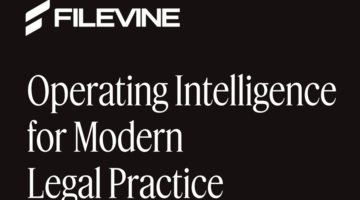
(Photo by David Lat).
Mercedes-Benz has shifted into overdrive in its attack on the rights of street artists. Four such creatives — James Lewis, Daniel Bombardier, Jeff Soto, and Maxx Gramajo — sent cease-and-desist demands to MB, expressing agita over MB’s use of their murals as set dressing for product photography shoots. In these shoots, MB’s G 500 Series vehicles were positioned in the foreground with the street artists’ murals providing color and background and that oh-so-important and intangible element of authenticity. MB then distributed and published these photographs online to promote its G-rides.
There is really no doubt that a conscious decision was made by MB to incorporate the street artists’ murals into its advertising. And most would agree that the street artists should be compensated if their artwork is used in marketing materials.

4 Ways Your Firm Can Build Economic Resilience
It’s the key to long-term success in an uncertain business climate.
MB, though, after receiving from the artists various cease-and-desist demands, went on the offensive and sued the four street artists in Detroit, a calculated move to increase the cost of litigating the case and perhaps obtain a home-field advantage in the town known as Motor City. The suit sought a judicial declaration that MB had infringed no rights and, even more aggressively, that the street artists had no rights to even be infringed. As you might imagine, the four artists cried foul and moved to dismiss the lawsuit, arguing, among other things, that Detroit was an improper venue. The court rejected the street artists’ motion.
MB, to its credit, and in a move that seems likely to have influenced the court’s decision, obtained from the city of Detroit a permit to hold a commercial shoot at 1314 Gratiot Avenue and the surrounding environs, the locale of the murals at issue. Lewis, like the other artists, created his mural in 2016 during Detroit’s annual Murals in the Market festival. The express aim of this festival was to turn the Eastern Market district of Detroit “into a must-see destination for arts,” among other things. Crucial to the case is the fact that the street artists’ respective murals were “painted on the façade of a building, w[ere] integrated into that building, and became a permanent fixture of the Eastern Market’s cityscape.”
In denying the artists’ motion to dismiss, the court notes the perhaps ill-advised language in the artists’ demand letters, which expressed a “desire to ‘expose’ Mercedes, use formal discovery to learn information other people can use to sue Mercedes, and tell a jury that Mercedes made $80 million selling the G series truck in an effort to wipe out Mercedes revenue from sales of the G Series.” But, despite the poor choice of language, there was really no basis on which to deny the street artists’ motion.
The decision is notable for a couple of reasons.

How Filevine’s New DraftAI Cuts Out Hours Of Writing Work
Now it transforms your document creation with natural language prompts.
First, the court rejects the street artists’ argument that the case is not yet ripe because registrations for the works at issue had not yet issued. This argument exposes another grave flaw in the Supreme Court’s recent, ground-shifting decision in Fourth Estate Publishing Ben. Corp. v. Wall-Street.com, LLC. The case, as readers of this column know, held that an artist cannot file a copyright infringement suit against an infringer until she receives a registration certificate from the Copyright Office and has already caused headaches and delays across the nation.
Here, the street artists argued that MB’s suit was premature because there did not yet exist registration certificates for the murals at issue. The court rejected the argument, acknowledging that while copyright holders must possess a certificate before filing suit, the same limitation does not apply to accused infringers, and expressly holding that the “absence of a registration does not preclude an accused infringer from seeking a declaration of non-infringement.”
This exposes an additional negative externality of the Fourth Estate decision — it will force copyright holders to delay in providing notices of infringement until they receive the registration for the work at issue. If they don’t, they will be vulnerable to declaratory relief actions like this one and, even worse, will be precluded from filing counter-claims for infringement due to the registration requirement. One can imagine a situation where an accused infringer files a declaratory relief action and the copyright holder does not receive its registration until after the deadline to amend the pleadings to assert a counterclaim. That copyright holder will then have to file an entirely separate copyright action that will lag behind the declaratory relief action. This will result in more delay and more work for the courts and litigants, none of which is ideal.
The Lewis court, in a meatier section, then addresses section 120 of the Architectural Works Copyright Protection Act (AWCPA), which MB sought to exploit to evade liability for infringement. This section holds that the “copyright in an architectural work that has been constructed does not include the right to prevent the making, distributing, or public display of pictures, paintings, photographs, or other pictorial representations of the work, if the building in which the work is embodied is located in or ordinarily visible from a public place[.]”
The court found that MB’s exploitation of the street artists’ murals may be shielded by the AWCPA. While this statute has long been understood to allow photographs of buildings, this would be the first time that a court has allowed the commercial exploitation of a non-architectural work incorporated into a building’s facade.
Citing Leicester v. Warner Bros., a Ninth Circuit case involving the depiction of a building in Batman Forever, the Lewis court found that an artist might have an infringement claim where the mural was divorced from the context of the building in which it was embodied, but that the use of the work as embedded in the building was not likely to give rise to a claim. It thus rejected the street artists’ challenge to the AWCPA’s application, which challenge, the court finds, sought to restrict the “important right of the public to take pictures of buildings that are publicly visible, free from any claim of copyright infringement.”
For whatever reason, the court fails to acknowledge or discuss the only extant decision to address the exact question at bar: Adrian Falkner v. General Motors LLC. This case addressed a car company’s exploitation of Detroit-based street art in the context of a marketing campaign and rejected the same argument advanced by MB and credited by the Lewis court.
Relying also on Leicester, the Falkner court astutely noted that the street art murals at issue and were “not a part of a functional, utilitarian, or useful role in the architecture” and were considered “conceptually separable from the building and were independently and fully protected under Section 102(a)(5).” The Falkner court homed in on the Ninth Circuit’s holding that a work had to be “part of” a building, in order to fall within the purview of the AWCPA. Falkner, like Lewis, concerned a parking garage and the court in Falkner reached the sane conclusion that the mural was not “part of” the architectural work that comprised the parking garage. This sensible result seems to invoke the “conceptual separability” doctrine from Star Athletica v. Varsity Brands that we all know and love, but does not engage in a lengthy analysis in that regard.
The Lewis court reaches the opposite conclusion as Falkner, with both cases purporting to interpret Leicester. Should the Lewis court reach the same conclusion as to the AWCPA’s applicability at the summary judgment stage and dispose of the case on that basis, as is likely, the street artists should port their spray cans, brushes, and briefs on over to the Sixth Circuit, and seek redress.
 Scott Alan Burroughs, Esq. practices with Doniger / Burroughs, an art law firm based in Venice, California. He represents artists and content creators of all stripes and writes and speaks regularly on copyright issues. He can be reached at [email protected], and you can follow his law firm on Instagram: @veniceartlaw.
Scott Alan Burroughs, Esq. practices with Doniger / Burroughs, an art law firm based in Venice, California. He represents artists and content creators of all stripes and writes and speaks regularly on copyright issues. He can be reached at [email protected], and you can follow his law firm on Instagram: @veniceartlaw.